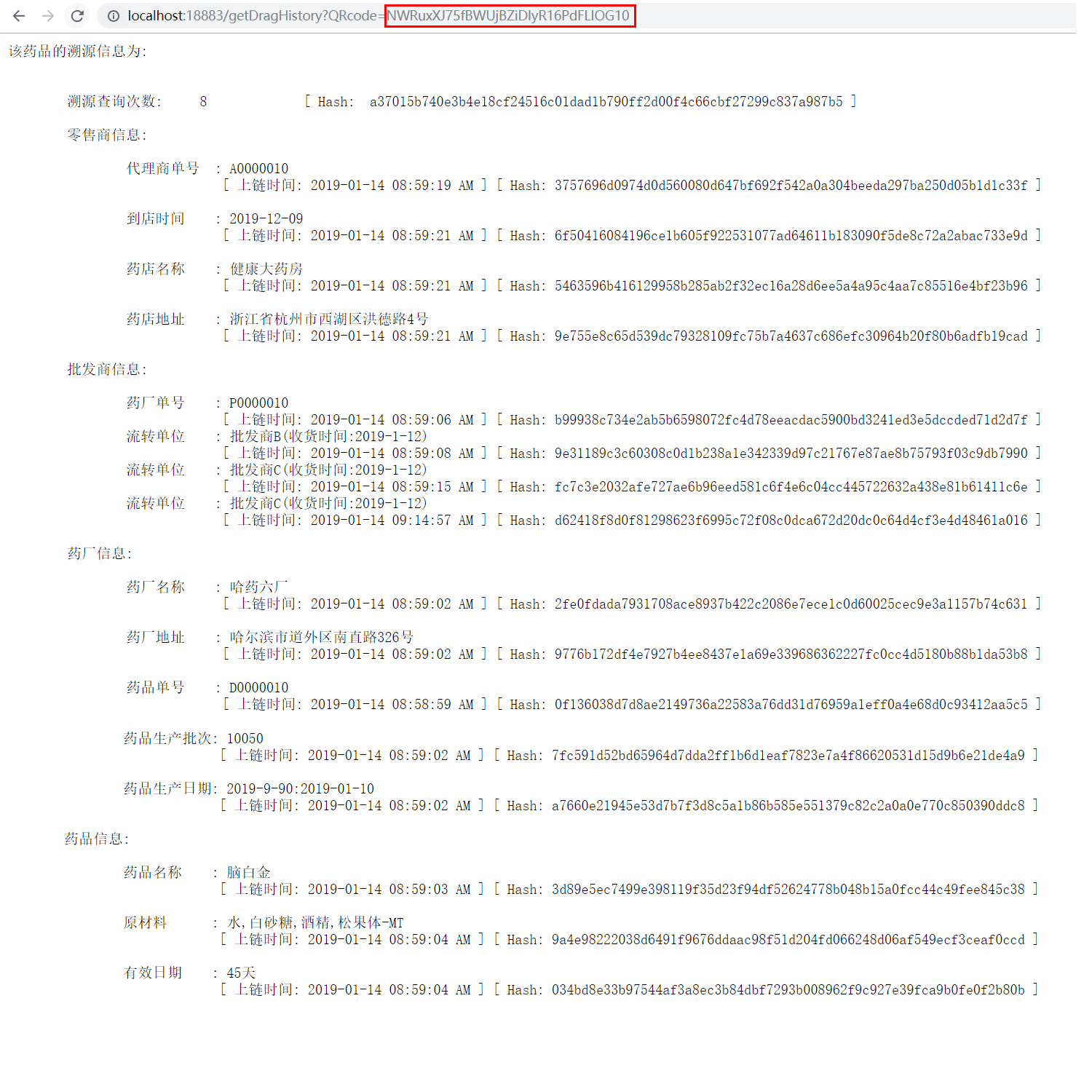A brief introduction to the demo function of drug traceability based on Hyperledger Fabric, involving drug factory nodes, agent nodes, retailer nodes and other multi-institution chain queries.
More blockchain technology and application classification:
Blockchain applicationBlockchain development
Ethernet Square | Fabric | BCOS | cryptography | consensus algorithm | bitcoin | Other chain
Token Economy | Traditional Financial Scenarios | Decentralized Finance | Anti-counterfeiting Traceability | Data Sharing | Trusted Deposit
This Demo simulates the sorting node, pharmaceutical factory node, agent node, and retailer node through 4 nodes. The three peer nodes correspond to the chain codes (smart contracts) of different business logics. Through the chain storage structure (as shown in ppt), the purpose of layer-by-layer search is achieved, and the traceability information of each link is finally found through the unique ID. Since chain storage needs to store the entire table structure, each peer node needs to initialize (table structure) at the very beginning. This scheme can be used as a reference for traceability business in general anti-counterfeiting traceability and supply chain. The following is the demonstration process. The data is stored or inquired from the blockchain through the background url parameter transfer. "One", "Two", and "Three" respectively represent the three responsible party (peer) nodes to perform data on-chain operations. "Four" is the user inquiry process.
1. Pharmaceutical companies organize data on the chain
Initialization of the pharmaceutical factory (table structure):
(The information marked in red is the specific information passed in)

Pharmaceutical information on the chain:

Drug information on the chain:

2. Agents organize data on the chain
Agent (table structure) initialization:

On the chain of agent circulation information:

3. Agents organize data on the chain
Retailer (table structure) initialization:

Retailer information on the chain:

4. User inquiry
The user queries all traceability information on the chain through the unique ID of the drug:

prompt
Since the underlying storage structure of the entire Fabric is a <k,v> database, each key-value storage corresponds to a transaction at a time, that is, there is a transaction hash, and each transaction record can be queried through each hash at a time. During the entire traceability process, all data additions have a hash, that is, a time stamp, so that the authenticity of the data can be verified at any time.
Original link: Drug traceability based on Hyperledger Fabric